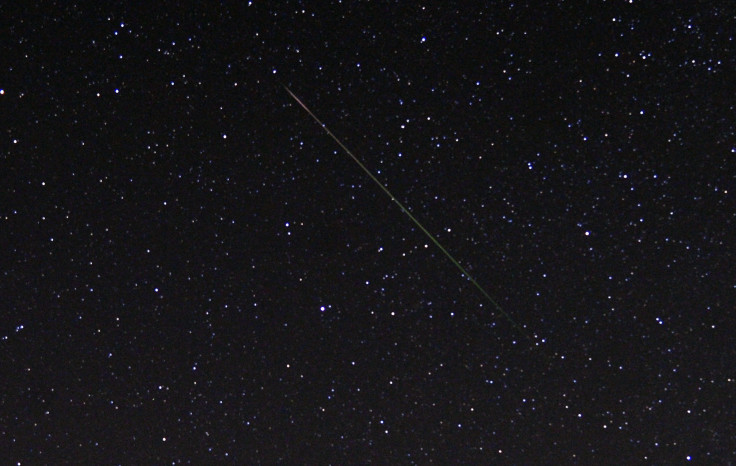Delta Aquarid Meteor Shower 2015 Live Stream: Where To Watch, How To View July's Shooting Star Show

Stargazers have had to deal with a few uneventful months staring at the night sky. This week's Delta Aquarid meteor shower will change that only slightly, but the end of the month means only a few weeks remain until the Perseids peak in August. Until then, the Delta Aquarids can serve as practice for observing shooting stars. Slooh will broadcast a Delta Aquarids live stream for the meteor shower's peak beginning at 9 p.m. EDT Tuesday.
The Delta Aquarids is a minor meteor shower that can be viewed around the world. Residents of the Southern Hemisphere and the Northern Hemisphere tropics will have the best vantage point for Tuesday's peak, NASA says. The peak could bring as many as 20 meteors per hour, the American Meteor Society reported. Unfortunately, the full moon later this week means the bright light from Earth's satellite will make viewing the Delta Aquarids difficult during the evening. Evening action could be as slight as four meteors per hour.
The best time to view the Delta Aquarids will be a few hours before dawn, after the moon sets. The darker sky will yield more opportunities to see a few meteors streaking across the sky. The show is not known for its abundance of fireballs -- fast-moving meteors -- but it can be a fun primer for the Perseids.
July's meteor shower gets its name because the radiant point -- the area from which the meteors appear to be coming -- is near Delta Aquaii, a bright star in the constellation Aquarius. As for its origins, NASA says the meteor shower is the result of Earth crossing through the debris left behind by two comets -- Marsden and Kracht -- while others believe comet 96/P Macholtz is responsible for the meteors.
To view the meteor shower, get away from the city lights and wait for the sun to set. The American Meteor Society has several good maps to help you find the constellation in the night sky. "It is best to center your field of view so that the radiant lies at the edge and not the center. Viewing there will allow you to easily trace the path of each meteor back to the radiant (if it is a shower member) or in another direction if it is a sporadic," Robert Lunsford, from the American Meteor Society, said.
Slooh's broadcast will include live views and radio tracking of meteors. The Delta Aquarids live stream can be viewed below.
© Copyright IBTimes 2025. All rights reserved.





















